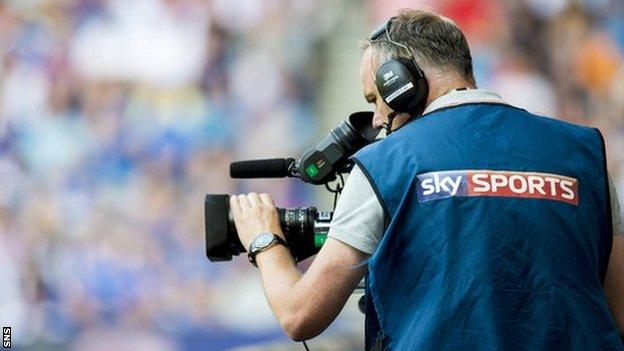SPFL: Is agreement edging closer after Scottish football confusion?
Last updated on .From the section Scottish

After weeks of despair and division there is - whisper it - a growing sense of optimism about the return of Scottish football.
Clubs held divisional meetings this week to discuss the latest issues, from reconstruction to testing and live streaming.
One club official told BBC Scotland "there is a possibility there could be a way forward", while another added: "There is definitely a new found sense of optimism, a sense of progress and a willingness to find a solution that suits everyone."
So as things begin to fall slowly into place, BBC Scotland examines what has been discussed and the remaining stumbling blocks as the game continues to tackle a turbulent time.
- Premiership clubs to stream games after Sky deal
- Philanthropist's £2m to be split equally between 42 clubs
- SPFL asks clubs about 14-team top flight for five years
- Clubs told of restrictions when team training returns
Is reconstruction moving closer?
Kind of. The SPFL has asked clubs in the Premiership and Championship whether they would support a 14-team Premiership for next season, potentially for a fixed period of five years.
They have to submit their feedback by 17:00 BST on Friday and have been encouraged to air any concerns. Despite the collapse of the initial reconstruction taskforce because of insufficient top-flight support, there seems to be an appetite among the 42 clubs to find a solution that suits everyone.
A move to a 14-10-10-10 system appears the most likely, as no club would find themselves in a worse position than they were when football was suspended on 13 March. However, there are still hurdles to overcome.
Some clubs feel that unless the financial situation becomes clearer, it is a pointless discussion. If some clubs can't afford to restart until fans can return to grounds, how can the number of teams in each division be decided? Hearts owner Ann Budge's quest for change still has life, but there is plenty of work to do.
Restart gathers pace
The momentum for a 1 August restart is gathering pace after a deal was struck with Sky Sports to allow Premiership clubs to stream home games to fans who have virtual season tickets. But as ever, there is a dichotomy between those in the top flight and the three tiers below, many of whom do not have the money or infrastructure to show their own games.
Clubs in Leagues One and Two have discussed restarting in mid-October instead with only two or three rounds of fixtures, assuming at least some fans will be allowed to return to watch their team in person by then. Aberdeen chairman Dave Cormack seems to roughly agree with that timetable, having said on Wednesday they are preparing to have some fans back with social distancing in place by November or December, with full stadia expected by 2021.
Then there are the return-to-training protocols issued to clubs this week, which detail the need for strict measures to keep coronavirus at bay. Many of these - testing, temperature checks, and sanitation stations - have financial implications for many clubs who are yet to see a full breakdown of costs.
Plus, some teams in the lower leagues train at council facilities, which could make complying with the regulations all the more challenging.
Show clubs the money
At the heart of all of these issues is money, which is where the philanthropist James Anderson may come in. The Edinburgh-based investor has held discussions with the SPFL about donating money to help clubs during the crisis, understood to be around £2m.
That would be split equally among all 42 clubs, so it would mean very little to the likes of Celtic and Rangers but could be significant in allowing those in the Championship and Leagues One and Two to restart.
However, many club officials in the bottom tier are sceptical about whether it would be enough for them to return without fans. Nine of the 10 are part-time, meaning testing and quarantine for players with other jobs is almost impossible.
Furthermore, the bulk of their income comes from hospitality at matches. So, until that can return, they will always be struggling to play.
Overall, the lower divisions could take a different path to those in the top two tiers as football's return in Scotland edges closer.








